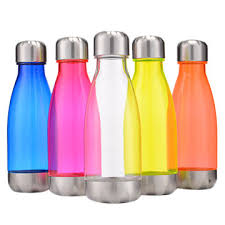Zero waste lifestyles are unrealistic

In order to promote a “low-waste lifestyle” instead of a “zero-waste lifestyle,” students should be encouraged to carry reusable water bottles instead of plastic ones when at all possible.
June 4, 2019
Taking care of the environment has become a new trend. This is a good thing because many nearby restaurants have started to hand out paper straws instead of plastic ones, and stores encourage customers to bring their own plastic bags with them for shopping. While it is quite possible to live a low-waste lifestyle, a zero-waste lifestyle is nearly impossible to achieve.
According to a 2017 Environmental Protection Agency article, a zero-waste lifestyle is a goal that is efficient, ethical and economical. However, this goal is also incredibly visionary because people who abide by a zero-waste lifestyle make sure that all discarded materials can be reused.
Today, millennials are leading the “zero-waste” movement. On the internet, social media influencers such as Lauren Singer and Jonathan Levy are documenting their “zero-waste” journeys with pictures and journal entries as well as videos. Singer and Levy, among others, claim that their yearly output of trash can fit into small mason jars, thanks to their devotion to this new movement.
However, according to a Jan. 2017 CNN article, much of our daily lives revolve around activities where we produce waste that cannot be reduced, reused or recycled. Currently, only nine percent of plastic in the United States gets recycled, with the rest ending up in landfills.
As our Western culture promotes materialism, most objects are thrown away instead of being reduced or reused. According to a Feb. 2017 CNN article, nine-tenths all solid waste within the United States does not get recycled when it could, and our recycling participation rate is only around 34.5%.
Assuming that WCHS students’ averages line up with the national average, approximately 780 out of 2,200 students meet one criteria for living a low-waste lifestyle, given the fact that they recycle solid waste when they can. If this number were to become 75%, then that would be like removing 50 million cars from U.S. roads, according to a Feb. 2016 CNN article.
Many people do not take small steps to reduce waste. However, there are easy things that high school students can do in order to reduce the amount of waste they produce at school. While a “zero-waste” goal is unrealistic, a “low-waste” goal is easily achieved by following a few steps.
Step One: Use a Reusable Water Bottle. One of the simplest things high schoolers can do to reduce waste is to carry a reusable water bottle with them to school, instead of using plastic ones.
According to a March 2018 EPA article, on average, Americans use 167 disposable water bottles per year, but only 38 of these are recycled. One reusable water bottle can save over 300 non-reusable containers that would otherwise end up in landfills.
Step Two: Go Digital When Possible. Going digital can reduce the amount of paper that ends up being recycled or worse, in landfills. Nationwide, paper and cardboard account for over 40 percent of all municipal and solid waste, which is close to half the garbage generated in the United States. While paper and cardboard are easily recycled, the United States only recycles about 25 percent of the paper it uses annually. Going digital through the use of Chromebooks and other school-issued laptops can solve this problem entirely.
Step Three: Start Composting. All too often, high school cafeterias throw away food without realizing its potential to be composted. A typical household throws away an estimated 474 pounds of food waste per year, and a high school cafeteria will throw away even more. However, much of that food can be composted through programs such as the Zero-Waste DC initiative.
Proponents of the “zero-waste” movement claim that zero-waste is a reasonable goal to strive for, both in households and school communities. They believe that people are not doing enough to help the environment, and a “zero-waste” movement, lead by millenials, will solve this issue.
However, by calling the movement “zero-waste,” millenials are confusing the general population, as a “zero-waste” movement is an unrealistic goal. Even though people claim that they can fit a year’s worth of trash into a mason jar, they are still wasting a ton of other materials. Instead of encouraging a “zero-waste” movement, the creation of a “low-waste” movement will be both realistic and highly achievable for people of all ages.

